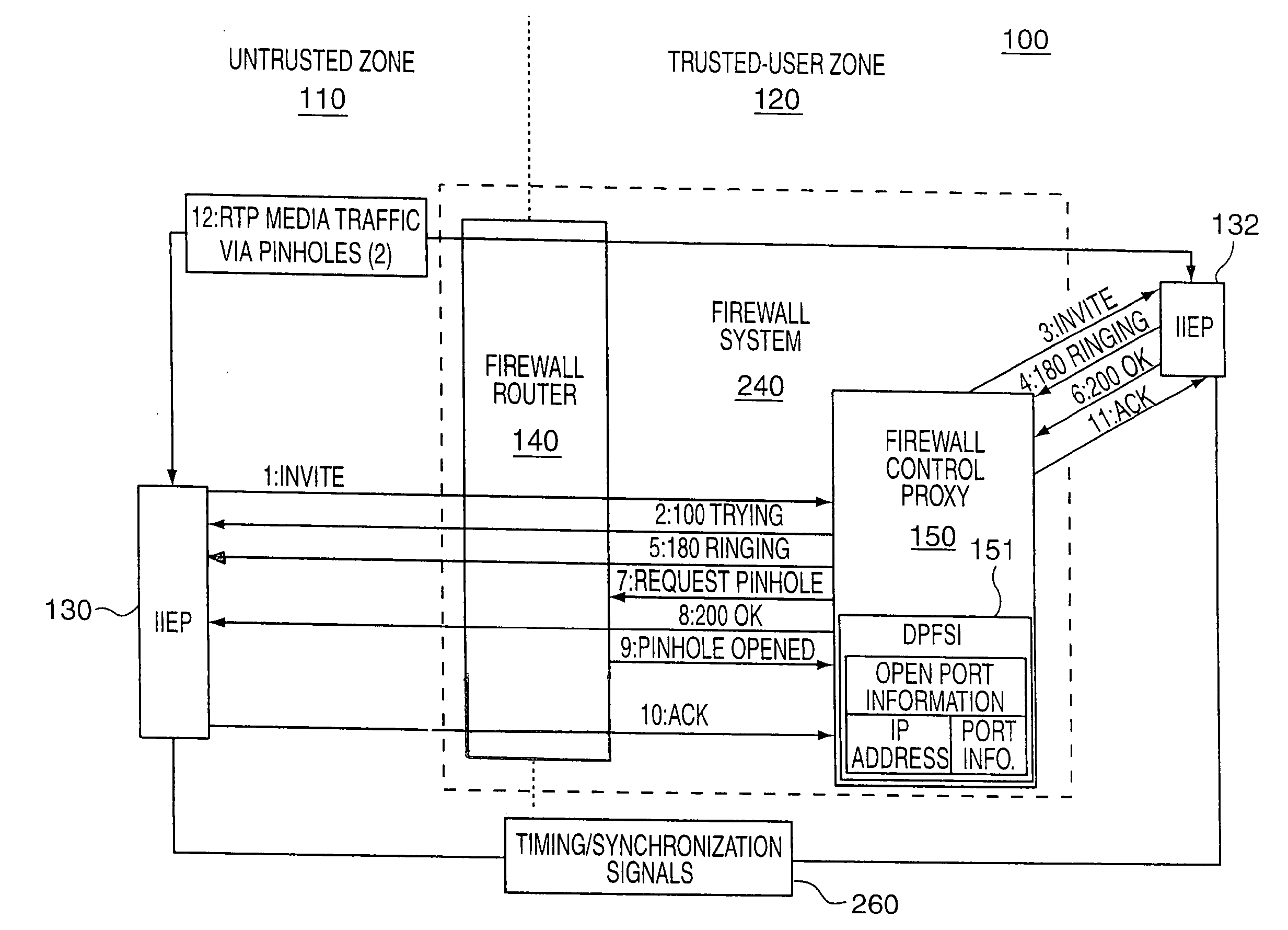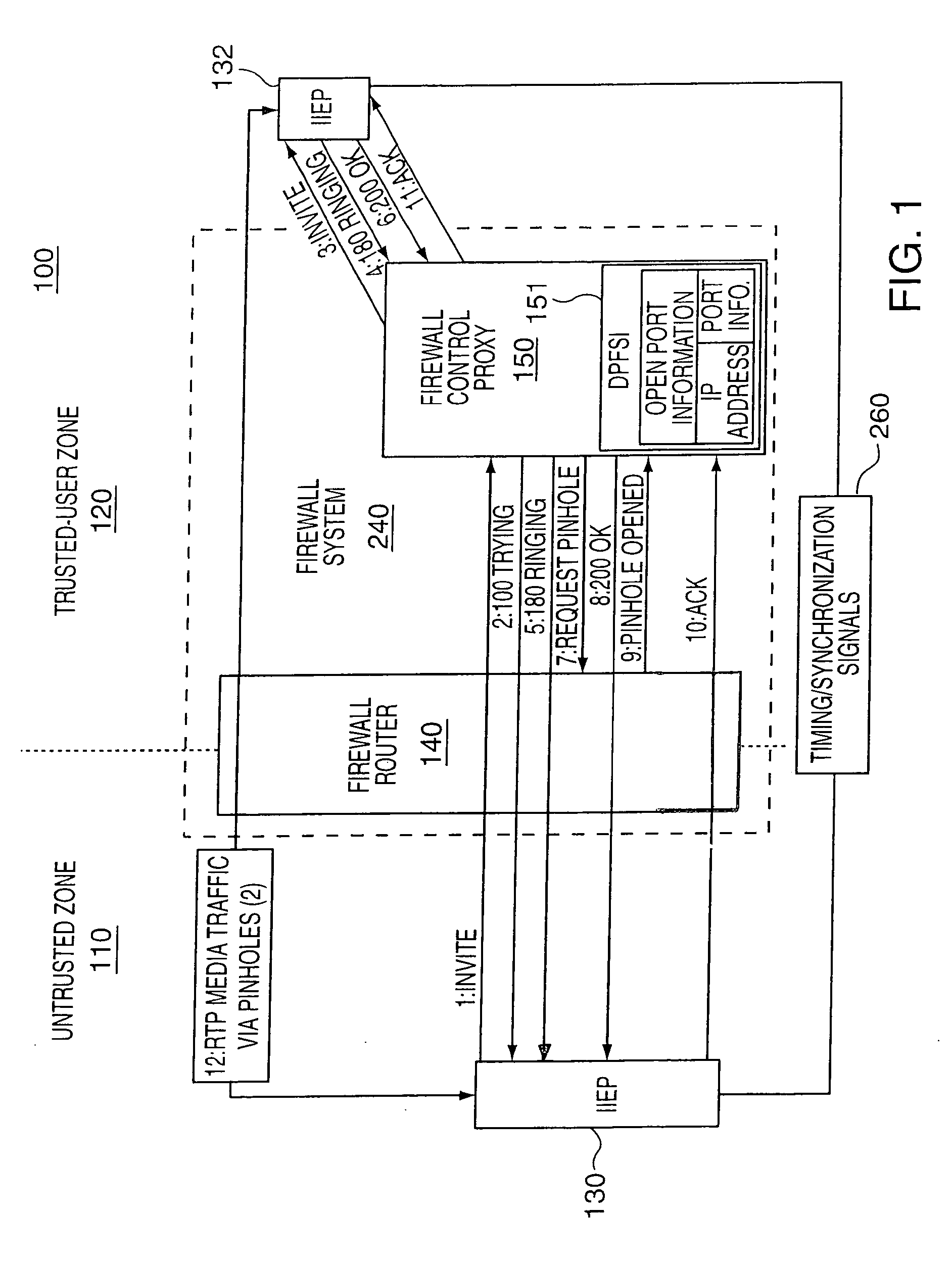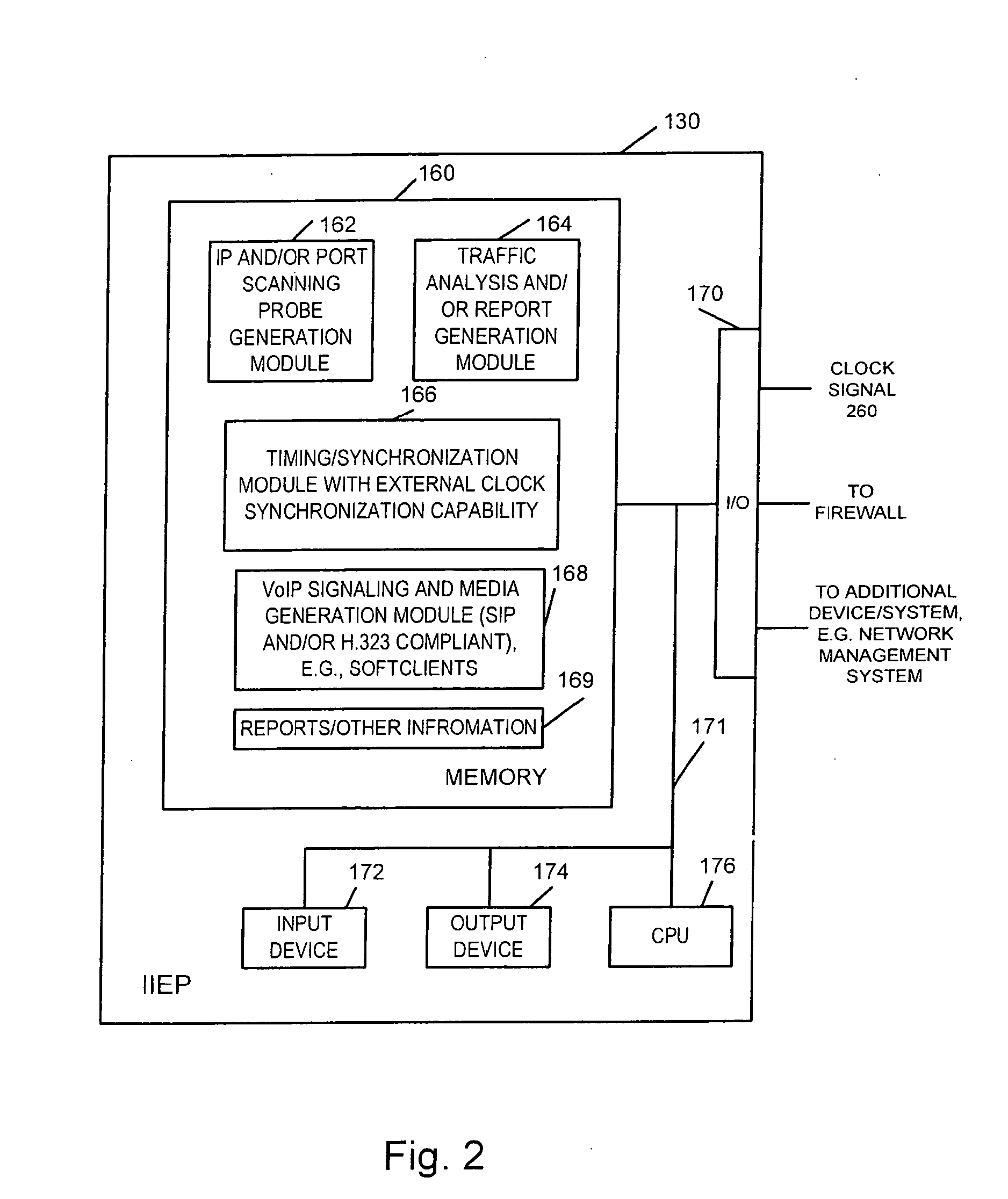Security management system for monitoring firewall operation
a security management system and firewall technology, applied in the field of communication, can solve the problems of difficult implementation of new security enhancements, network design on the basis of lack of security, and delay in the full realization of this voice over packet network paradigm
- Summary
- Abstract
- Description
- Claims
- Application Information
AI Technical Summary
Benefits of technology
Problems solved by technology
Method used
Image
Examples
Embodiment Construction
[0038]The present invention is particularly well suited for testing firewalls which open and close ports in a dynamic manner, e.g., to support session signaling such as for VoIP calls. In such applications, a firewall's ability to reject signals from IP addresses which have not initiated a media session, e.g., call, or are not being used in an ongoing media session is important. A firewall's ability to close and keep closed ports which are not being used in active media sessions, e.g., calls, and the ability to open and close ports to allow call signals to pass through on a dynamic, e.g., per call basis, in a timely manner are important to insure network security and a satisfactory level of service.
[0039]VoIP calls are commonly implemented using SIP or H.323 signaling to manage call establishment and termination. The methods and apparatus of the present invention are well suited for testing firewalls intended for either type of signaling application. For purposes of explaining the i...
PUM
 Login to View More
Login to View More Abstract
Description
Claims
Application Information
 Login to View More
Login to View More - R&D
- Intellectual Property
- Life Sciences
- Materials
- Tech Scout
- Unparalleled Data Quality
- Higher Quality Content
- 60% Fewer Hallucinations
Browse by: Latest US Patents, China's latest patents, Technical Efficacy Thesaurus, Application Domain, Technology Topic, Popular Technical Reports.
© 2025 PatSnap. All rights reserved.Legal|Privacy policy|Modern Slavery Act Transparency Statement|Sitemap|About US| Contact US: help@patsnap.com



